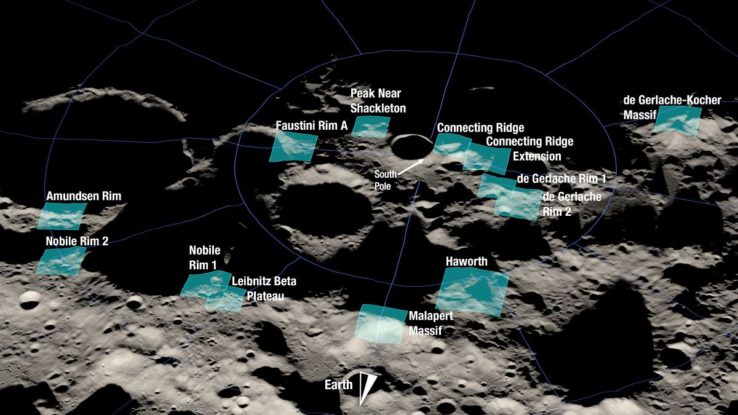Humans will return to the Moon in a couple of years if everything goes well.
As NASA gears up to send teams of people to the lunar south pole, one of the big questions is where, precisely, will these astronauts land?
NASA revealed 13 candidate landing regions for Artemis III, which will finally carry that precious human cargo.
"Selecting these regions means we are one giant leap closer to returning humans to the Moon for the first time since Apollo," said Mark Kirasich of the Artemis campaign development division at NASA.
It will be unlike any mission that has been done before as astronauts venture into dark areas previously unexplored by humans and lay the groundwork for future long-term stays.
The 13 potential landing regions are all within 6 degrees of the lunar south pole. The region of the Moon that no one has ever landed in is a much more technical challenge than landing at the equator. Two uncrewed stages of the Artemis mission must succeed before humans can safely launch.
The moon's south pole will be worth it. Cold traps are formed by craters that are in permanent shadow. It is hoped that patches of water ice up to several meters thick can be found hidden in the darkness.

Each of the landing regions has a number of possible locations around 200 meters in diameter. In order to ensure that astronauts have access to places that may contain water, potential landing zones are close to a crater rim or ridge.
"Developing a blueprint for exploring the Solar System means learning how to use resources that are available to us while also preserving their scientific integrity," says Jacob Bleacher of NASA. Lunar water ice is a valuable resource because it can be used for life support systems and fuel.
The astronauts will be able to see the sun for six and a half Earth days on the Moon. This is needed for the continuous provision of solar power.
Faustini, de Gerlache, Amundsen, Nobile, Haworth, Malapert, and Leibnitz are some of the craters being targeted. The landing regions will be narrowed down further if the launch dates are right. Some regions will be more favorable than others as a result of these dates.
Artemis I is set to launch on August 29th and will travel around the Moon and back again. The uncrewed mission has test dummies on board to collect data on what physical effects future astronauts might experience on their epic journey